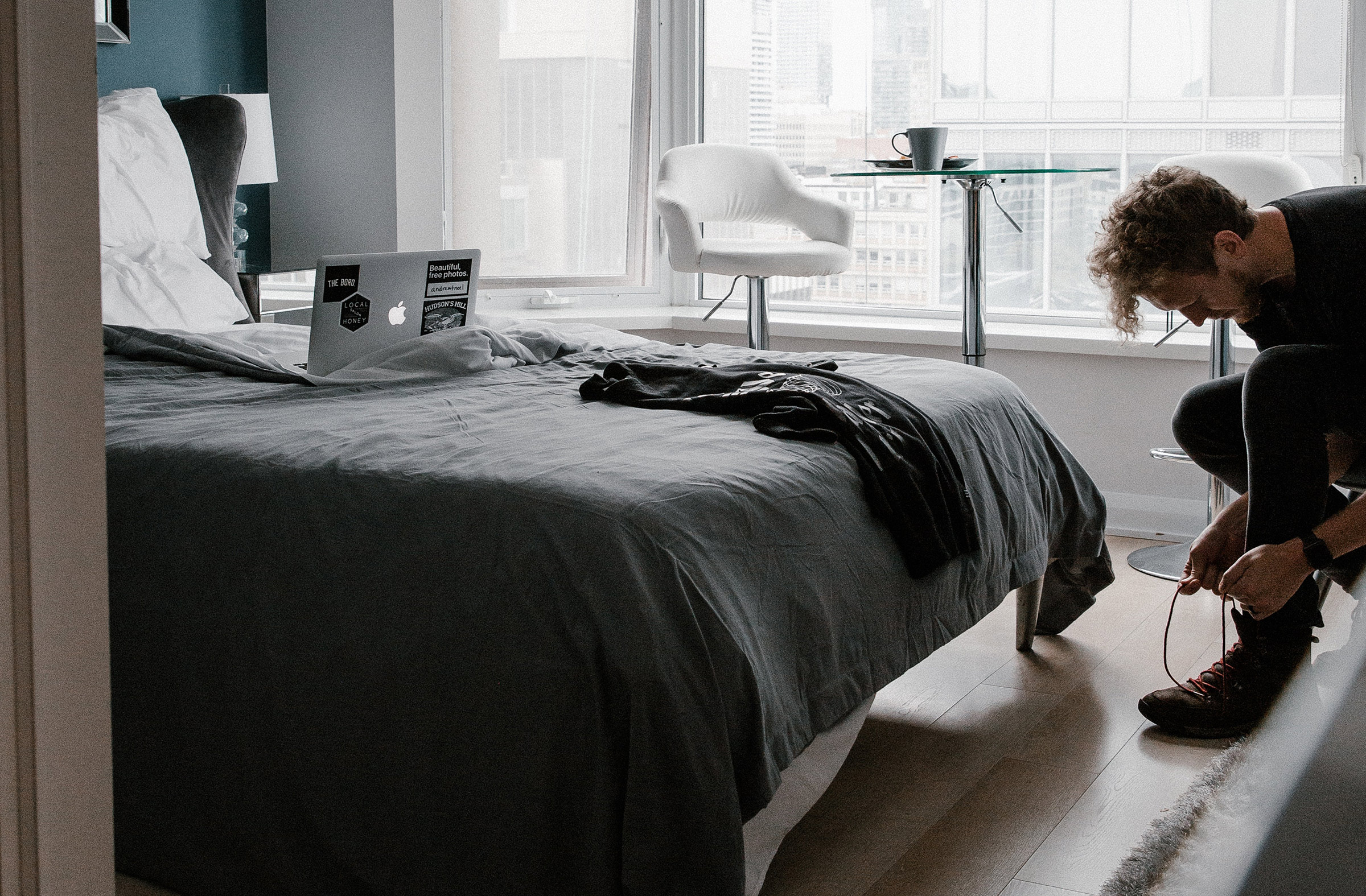No matter the reason for your telecommuting, working from home and going to an office each day present very different challenges. Going to an office each day and finding ways to be productive is second nature for most people. For our Valtech team, working remotely and collaborating with teammates all over the world is a daily occurrence. But if your company is making a move towards telecommuting, or if you find yourself working for a new company that has done away with office life, here’s a collection of tips to help you work from home effectively.
Stick to a Schedule
One of the benefits of working from home is you no longer have to commute to the office. Because of this, it can be tempting to sleep in, roll out of bed, and get right to work. But time management is one thing that’s harder when you aren’t in an office building, and effective time management starts before your workday when you work from home.
 Whether it’s getting up at the same time to get the kids ready, or walking the dog, or just getting up and stretching and taking a shower before you sit down to work, try to keep a consistent routine for the time before your day officially begins. And no matter how tempting it may be, try not to work in your PJs. Getting dressed for work is an easy way to kick your brain into professional mode.
Whether it’s getting up at the same time to get the kids ready, or walking the dog, or just getting up and stretching and taking a shower before you sit down to work, try to keep a consistent routine for the time before your day officially begins. And no matter how tempting it may be, try not to work in your PJs. Getting dressed for work is an easy way to kick your brain into professional mode.
Create a Space Just for Working
One big problem with telecommuting is knowing where your work life ends, and your home life begins. Because both work and recreation take place in the same general area, it’s easy for those lines to be blurred. One way to stop that from happening is to create a dedicated space in which to work.
An office is ideal, but if your space doesn’t allow for that, a simple desk and chair will suffice. Of course, if that’s asking too much, even designating a chair at the kitchen table or a specific spot on the sofa as your work area can be enough. Simply make sure not to sit in whatever space you decide when you aren’t working. Keeping the clear line between work and leisure time is very important.
One aspect of keeping one dedicated space for working is keeping that space clean and organized for work. Make sure you have everything you need to work effectively within reach in your dedicated space.
Clear Communication is Key
Whether you work remotely or in an office, clear communication is crucial to making sure your day and tasks go smoothly. However, for people who telecommute, this can be even more difficult. Without face-to-face communication, a lot of important signals can be lost. Furthermore, when the opportunity to walk over to a co-worker’s desk for a quick question is no longer there, a lot of small things that don’t seem as important can get left behind.
Clear and open communication becomes crucial for success when working remotely. Establishing the right channels for communicating is the first step. Your team should be aligned on the best method of getting in contact immediately. Everyone on the team should be available through the prescribed channels during agreed upon working hours.
 Communicating remotely will also require agreeing on what types of communications go on which channels. For example, sharing personal stories and anecdotes about your day shouldn’t be sent over email when an Instant Message system is readily available, but things like performance evaluations shouldn’t be offered over email or IM and should instead be done in person, or over a video call when that’s not possible.
Communicating remotely will also require agreeing on what types of communications go on which channels. For example, sharing personal stories and anecdotes about your day shouldn’t be sent over email when an Instant Message system is readily available, but things like performance evaluations shouldn’t be offered over email or IM and should instead be done in person, or over a video call when that’s not possible.
When your team works from home, it’s not enough to plan to communicate, you need to be prepared with rules and guidelines for how to communicate. However, once you have those rules in place, there’s one communication rule that easily applies to everyone.
Communicate Clearly, and Often
A common problem for all people is the feeling that perhaps they communicate too much. The good news about telecommuting is that this isn’t really a problem. Due to the threat of being misunderstood, or someone missing something, or even to the presence of more distractions in people’s homes, repeating important information can be crucial to make sure everyone is on the same page.
This can mean anything from making sure you ask any question you might have in a meeting for your own clarification, to making sure that each conference call is followed by an email with the key takeaways and a summary of the meeting being delivered to all of the meeting participants. Don’t worry about being redundant, making sure everyone got the message is far more important.
Take a Break
When you work in an office, the day can have a natural rhythm that’s often aided by the presence of other people. You’re more likely to stop and walk to the breakroom for a cup of coffee because your co-worker is doing the same, or groups are likely to get together and take lunch at the same time.
 When you work from home, those natural rhythms are gone. You’re left to your own devices on when to eat or get a new cup of coffee. For many, this leads to fewer breaks and higher productivity, but it can also lead to higher burnout.
When you work from home, those natural rhythms are gone. You’re left to your own devices on when to eat or get a new cup of coffee. For many, this leads to fewer breaks and higher productivity, but it can also lead to higher burnout.
You need to take breaks to eat, but you also need to take breaks to allow your mind to reset and refocus, giving you a new perspective on the project you’re working on or the problem you’re trying to solve. Taking reasonable breaks through the day is necessary to your overall productivity. Don’t simply limit your breaks to getting food. Stop and take a short walk around your neighbourhood or do a small chore around the house. Just make sure to take some time away from working and be sure to get away from your workspace for a little while.
Move Around
In addition to taking breaks, making sure you move around and get some amount of exercise is also key. Do some yoga stretches, get a standing desk, go for a jog or a run instead of just a walk. But if running and jogging aren’t your thing, a walk will more than suffice.
The regular trips to the breakroom and conference rooms for meetings are gone. Standing around the coffee machine and talking with co-workers isn’t an option. When you work from home, you have to find ways to get moving and keep the blood flowing.
Unplug
One hardship of working from home comes with ending your day. In an office, the visual cue of co-workers packing up to go is a sign that the day is over. But when you’re working under your own steam, eight hours can pass without you noticing. Moreover, because the space in which you answer phone calls and emails is the same space in which you live, it can be tempting to keep responding to messages well into the night.
 When your day is officially over, be sure to fully unplug from work as much as you reasonably can. If you can afford to turn off your work computer and leave your work phone on silent for the night, do so.
When your day is officially over, be sure to fully unplug from work as much as you reasonably can. If you can afford to turn off your work computer and leave your work phone on silent for the night, do so.
The Results
This list of recommendations isn’t exhaustive. Things like having meetings throughout the day with your co-workers and turning on your camera during video conferences are also important. Remembering that you work with people and not just screens can be do a lot to help your workday.
However, when you follow these guidelines, you’ll see that working with as much, if not more, productivity as you had in the office will be easily doable from home.






